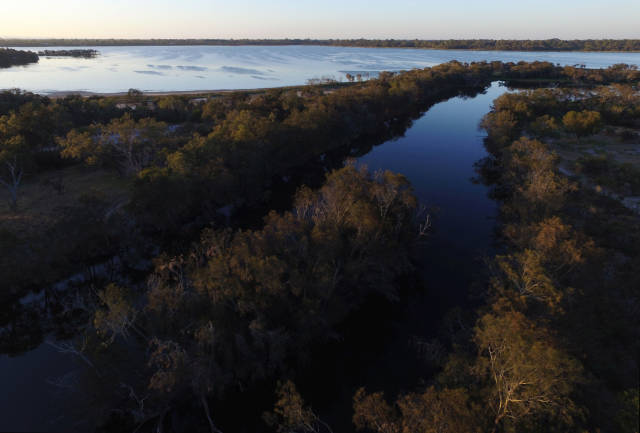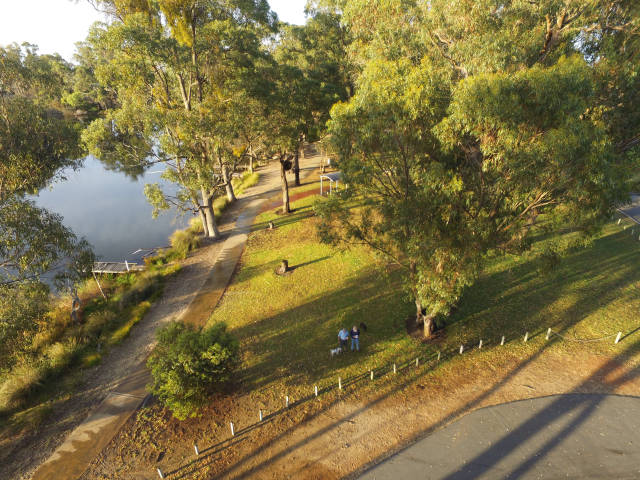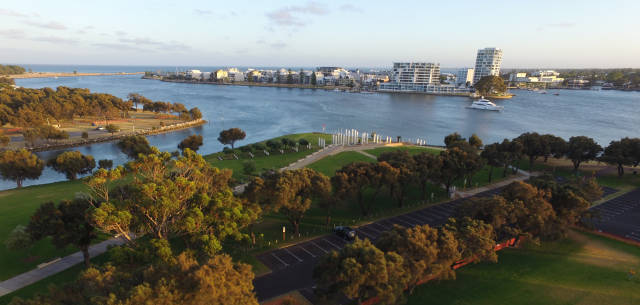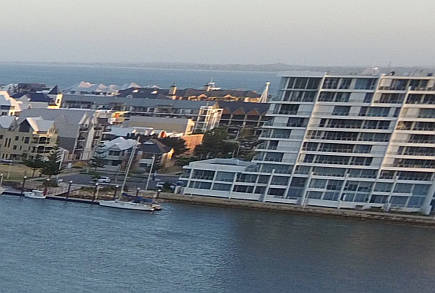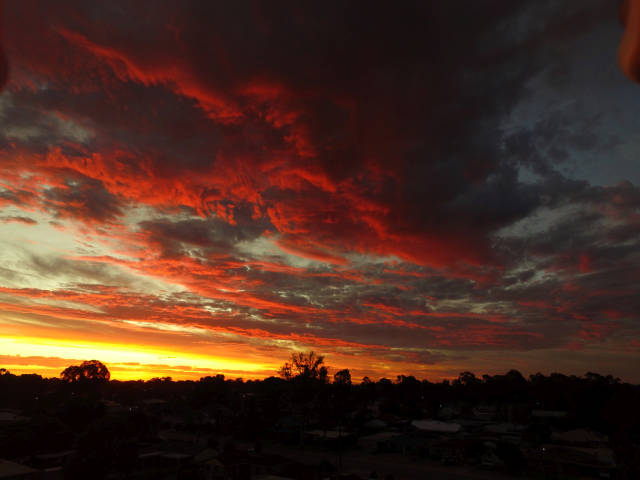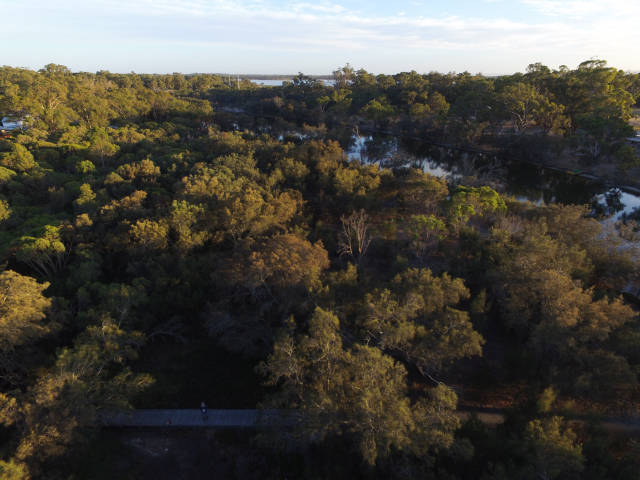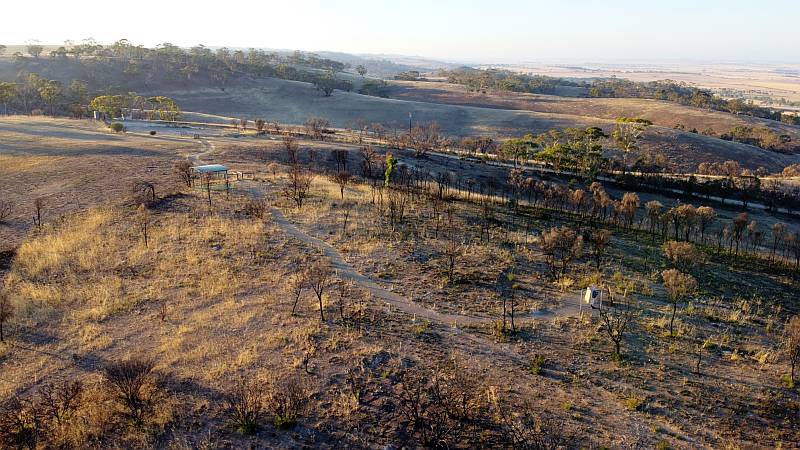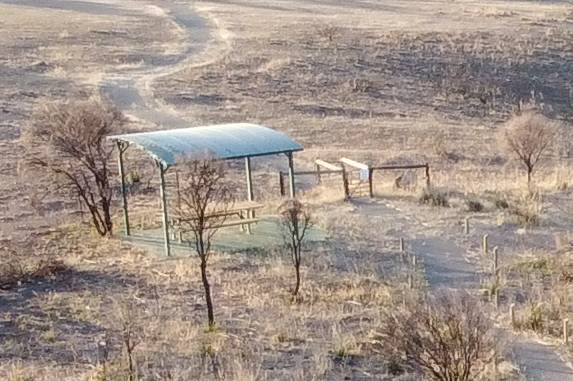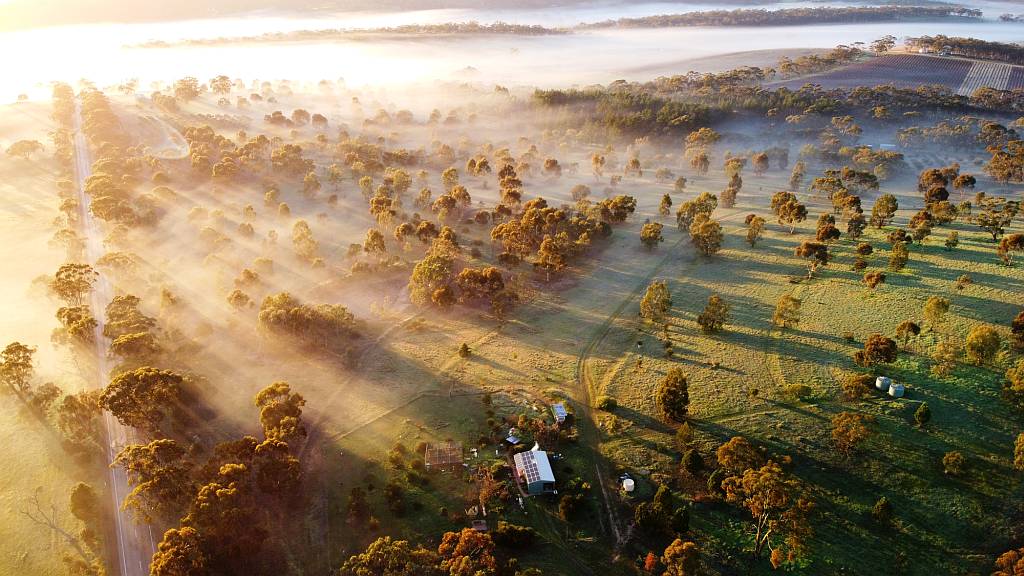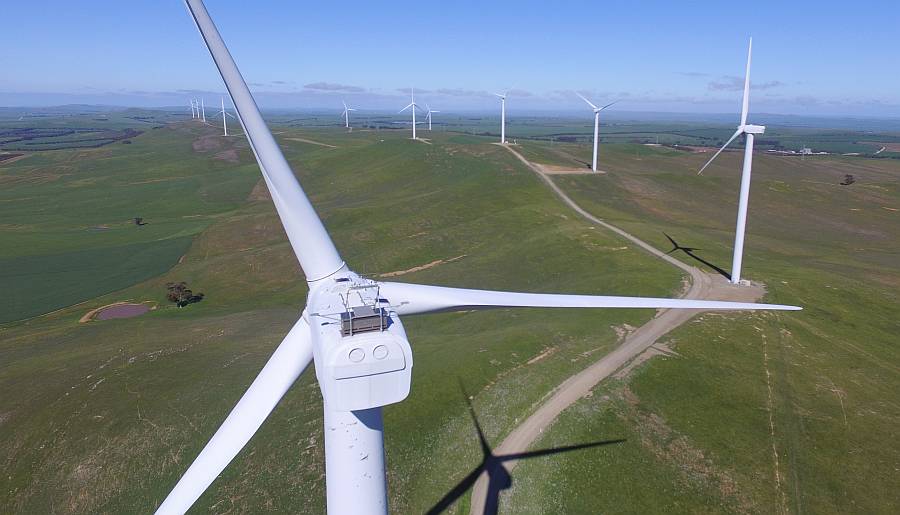Phantom 3
It is much easier to note faults, shortcomings and complaints than it is to note points of satisfaction. At the time of writing, 2015/12/20, I was, in general, very pleased with my drone, but I did feel that the instructions provided could be greatly improved, and that the operations needed to upgrade the firmware could be much better explained.
Phantom 3; what you need besides the drone itself
The Phantom 3 Advanced drone comes with a remote control unit, a set of spare propellers, a battery, a battery charging unit, several leads, and a few other odds and ends.In addition to this the user must have a 'compatible device' which may be one of several up-to-date iPhones, smart phones, tablets, mini iPads or similar. I had to buy an iPad mini 2 at a cost of about Aus$380. This is not an optional extra, it is an absolute necessity.
The user will also need access to the Internet to set-up the drone and iPad, but not to fly the drone once the set-up is completed.
Phantom 3; the instructions provided
The instructions that DJI provide for their excellent drone are a long way short of excellent.The Phantom 3 Advanced comes with a very limited set of written instructions. Apart from the Safety Guidelines and Disclaimer booklet there is a single sheet of paper folded into five sections, each about A5 size, titled Quick Start Guide. These are quite inadequate.
After some time I discovered that a much more detailed 58-page set of instructions, the DGI Phantom 3 Advanced User Manual, can be downloaded from the DJI site. But this too is not what it might be. For one thing it refers to the "DJI Pilot app" which seems to have been superceded by the DJI GO app.
For a beginner to get started using DJI's instructions is slow, difficult,
confusing, and frustrating.
Phantom 3; updating firmware, 2015/12/19
The DJI instructions (in the manual) for updating the firmware state "To check your current firmware version, launch the DJI GO app and tap through Camera View > System Status Bar > Overall Status". What is the System Status Bar? Nowhere in the manual is the System Status Bar referred to! Firmware update guide, P5, "If your ... remote controller firmware is v1.3.20 or above, you must use the DJI GO app to update the firmware". This turned out to not be true.My first attempt to update the firmware, from the instructions on the DJI site, failed and gave me a drone that I could not use for several days (because I had no access to the Internet to try the update again).
When I did again have access to the Internet I found Drone Camps after a search. I followed the instructions given in Drone Camps and the firmware installed successfully in the aircraft. (Not in the remote control, but perhaps there was none to be installed in it.)
It seems that the very small LED at the front side of the camera gimbal flashes red and green while the installation process is in progress. A loud beeping sound, described as "D, D, D" in the manual is made if the update has been unsuccessful. A much quieter beeping takes place during updating that is progressing satisfactorily.
|
|
Phantom 3; the camera
The focal length and angle-of-view
Distortion near the (right top) corner of an image |
At first the choice of a very wide angle lens seems odd. It means that the Phantom 3 is not of much use for photographing something like a bird in a tree; you are not going to be able to get anywhere near close enough.
The P3A camera has a 94° angle of view on the diagonal, a standard 50mm lens on a 35mm camera has a 47° angle of view (see Wikipedia). I would have preferred that the camera had something around the 47° angle of view.
I suspect there are several reasons for the extra wide angle lense:
- It makes it easy to find the view that you want to photograph; a lens with a smaller angle of view could make this much more difficult, especially for beginners;
- If you want to include the horizon in the photo, the wide angle gives you quite a bit of foreground;
- A little movement is less likely to cause blurring.
The very wide angle of view means that there is quite a bit of distortion toward the corners of the images, as can be seen in the detail on the right, which is a small part of the full original. However, so far as I can tell, straight lines anywhere in the field of view are rendered as straight lines in the images. Distortion of the type shown in the image on the right is unaviodable in a very wide angle view if straight lines on the ground are to be rendered as straight lines on the image.
The portion of the image shown on the right is about a quarter the width of the original.
Upward tilt on the gimbal
Sunset over Mandurah, Western Australia |
This can be changed on the gimbal settings, and it must be changed if you want to photograph something like a sunset or a cloud formation.
To capture the photo on the right I had to tilt the camera upward. Note that parts of the drone can be seen in the top corners of the image.
General
The images are 12 megapixels (4000 x 3000 pixels) and the image files as they come from the camera are about 5 megabytes. The files can be reduced to one megabyte using an image editing tool such as Irfan View without noticeable loss of quality.
Serpentine loop track – drone selfie |
|
|
|
Mavic Mini
I received my new drone 2020/02/11.Mavic Mini; setting up
Getting it ready to fly involved charging the batteries and updating the firmware. This didn't go smoothly. It took quite a long while with the drone apparently attempting several times to install the firmware. At one point there was a message that said something like "Installation successful, when the drone automatically switches off restart it". It didn't switch off, its indicator light flashed red for many minutes leaving me unsure what I should do. After a time I went back to the installation process. At another point there was a message that said something like "Installation failed, contact DJI".After something more than an hour the updating seemed to be successful. The drone got quite hot during the updating and when I attempted to prepare it to fly I received a message saying that it was too hot and should be allowed to cool before flying.
Finally, after a total of several hours, and recharging the batteries again, I successfully test flew the drone.
Not an auspicious beginning.
Mavic Mini; first impressions
On stability and controllability the MM seemed to be at least as good as the older Phantom 3.
I was surprised to get a strong wind warning when I sent the drone up to about 40 metres. There was no indication in the controllability of the drone that the wind was a problem at all, and the wind was not at all strong at ground level.
(The Phantom 3 didn't give strong wind warnings.)
Mavic Mini; image quality
|
It seems that, if anything, the Mavic Mini has even better image quality than the Phantom; but both gave excellent images. In my experience the effective number of pixels in images is usually about a quarter of the actual number of pixels.
For example, if a camera has images with 4000 x 3000 pixels, I usually figure on this being effectively 2000 x 1500. (The Phantom 3 has 4000 x 3000 pixels, 12 MP; the Mavic Mini has 4000 x 2250, 9 MP.) That is, with many cameras, if one resizes a 4000 x 3000 pixel image to 2000 x 1500 pixels, very little detail will be lost. But with the Mavic it seems that all 9 million pixels are significant.
This is very important because it means that a small section of a photo can be 'blown-up' and still look sharp; effectively providing some telephoto capability from a fixed-focus lens.
See the image below.
|
The colour of the two images differ because the upper one was altered to allow for the 'high dynamic range' in the lighting (the sky and the land in the distance were much brighter than the foreground).
Comment 2020/04/24
I continue to be very pleased with my Mavik Mini. Ever since the frustrating and worrying setting up when I received it, it has behaved faultlessly. It is much quicker to get into the air than the Phantom 3, and it is much more easily portable. I continue to be very impressed with the camera.
|
|
Its size makes it harder to see in the air than was the Phantom.
